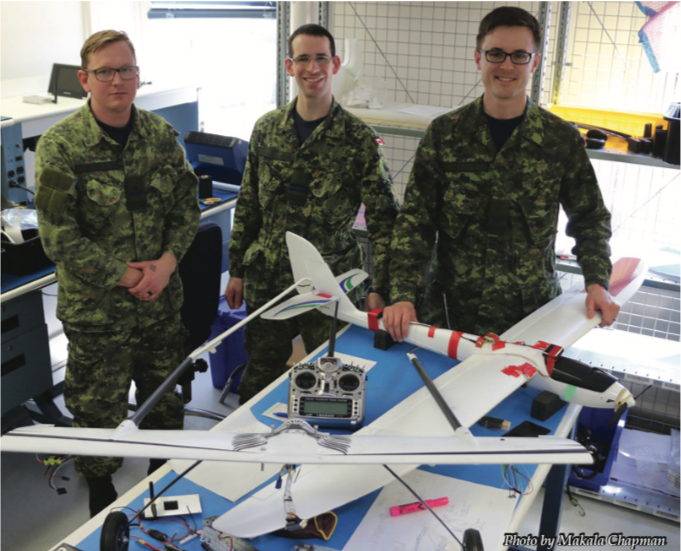Master Corporal Greg Linton, Captain Dave Hardy and Corporal Stephen Hankinson with the Albatross UAV (foreground).
ATESS Leading The Way For Unmanned Aerial Systems
A squadron not normally known for flighthas taken liftoff. Members of 8 Wing Tren- ton’s Aerospace and Telecommunications Engineering Support Squadron (ATESS) recently celebrated the success of their unmanned aerial system (UAS), which was able to fly for eight minutes. While on the outside it looks like a commercial drone, it’s much more sophisticated than that explains UAS team member Master Corporal Greg Linton. Unlike a drone, the UAS is more than just the vehicle itself, as it also takes into account the operator, ground control, communications, support equipment and more. The main objective of this project isn’t so much about the physical aircraft as it is to be able to integrate electronic sensors and cellular technology into small hobby aircrafts that are found available on store shelves. In essence, the ATESS team is building a skeletal frame capable of technologies that could be transferred into most small aircraft, similar in size to a standard drone. As for how the project can into being, MCpl. Linton explained that it started out with one member of ATESS’ interest in aerial vehicles. Going from there, the request to build a UAS in-house flew up the chain of command and, ultimately, the Royal Canadian Air Force (RCAF) Commander for approval in 2017. MCpl. Linton credits innovation as one of the key factors that helped his team get the go-ahead as UAS technology is a fairly new frontier in the RCAF.
To read the original article please download it here


